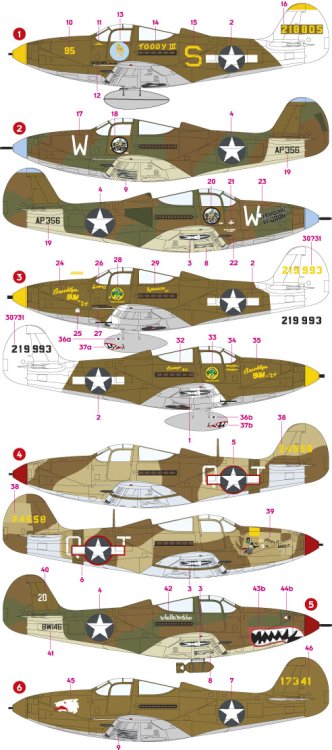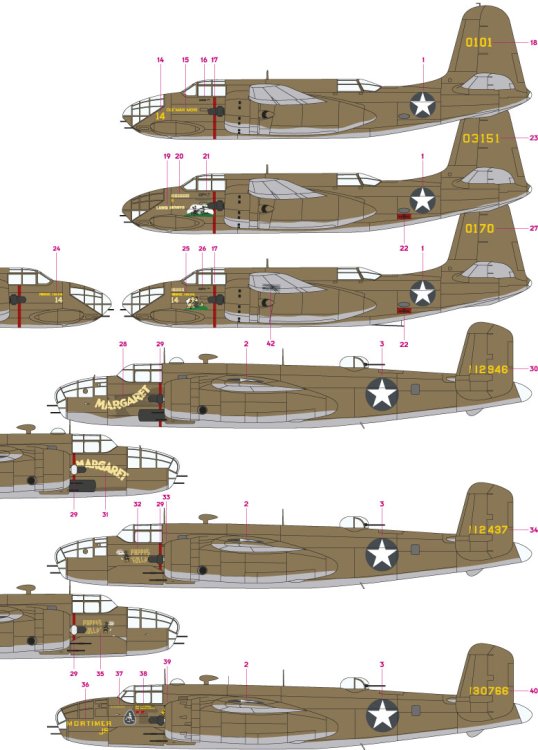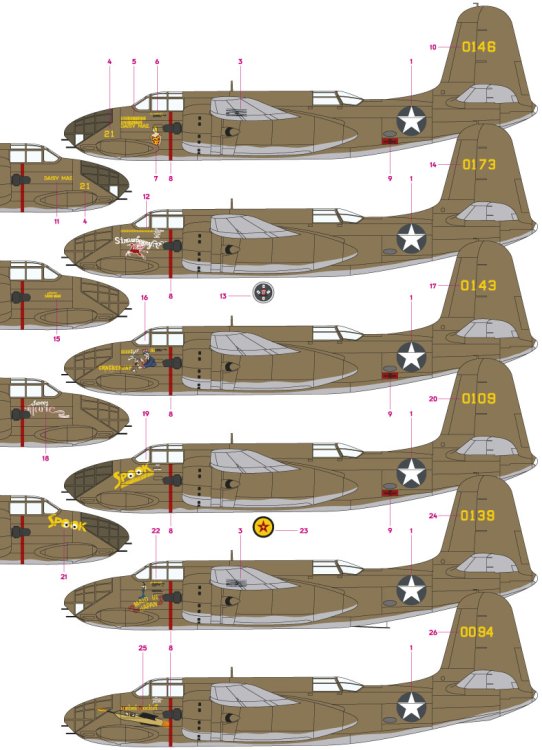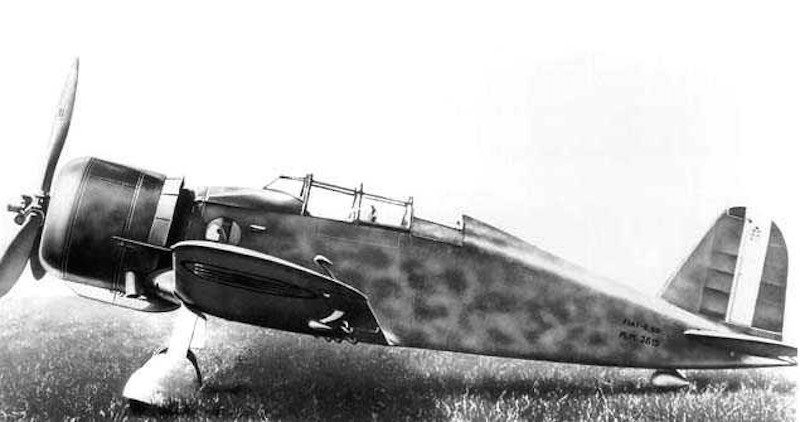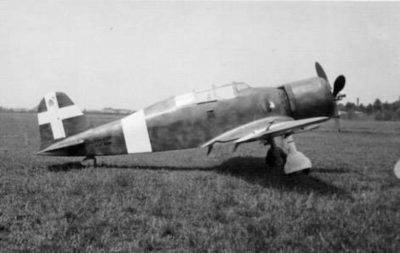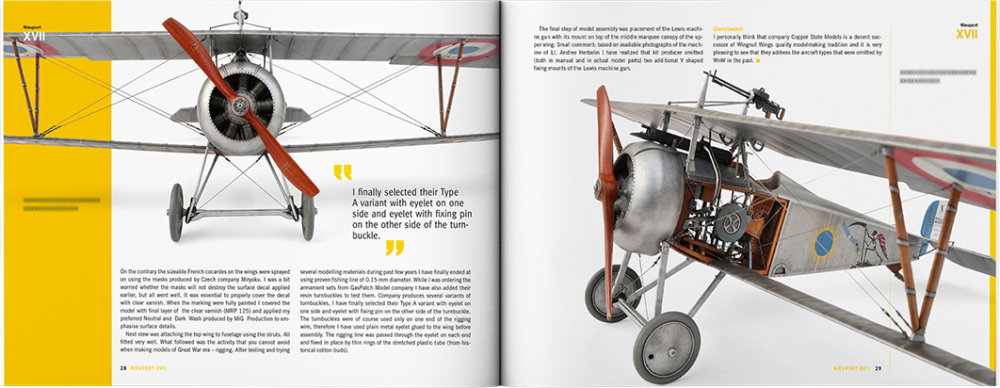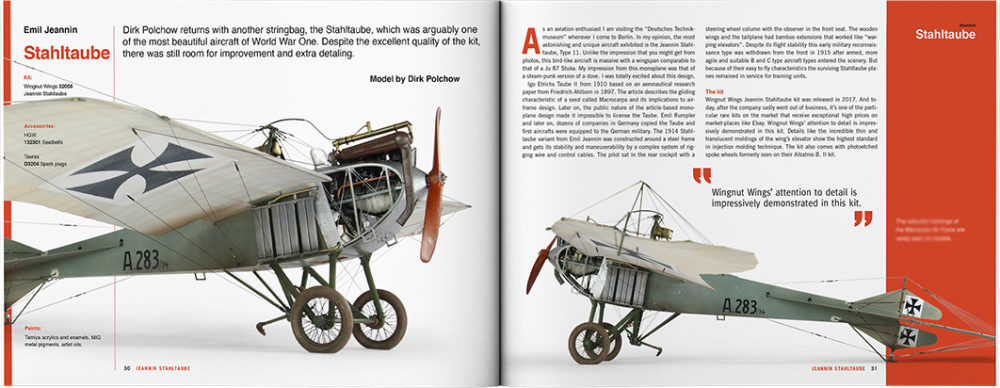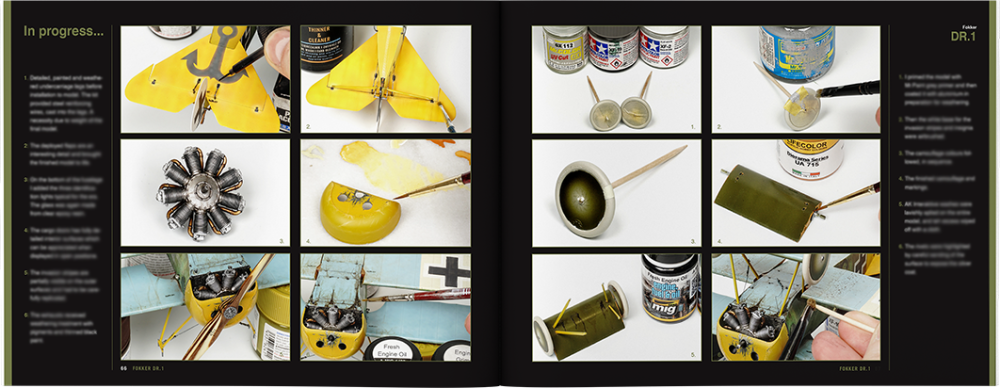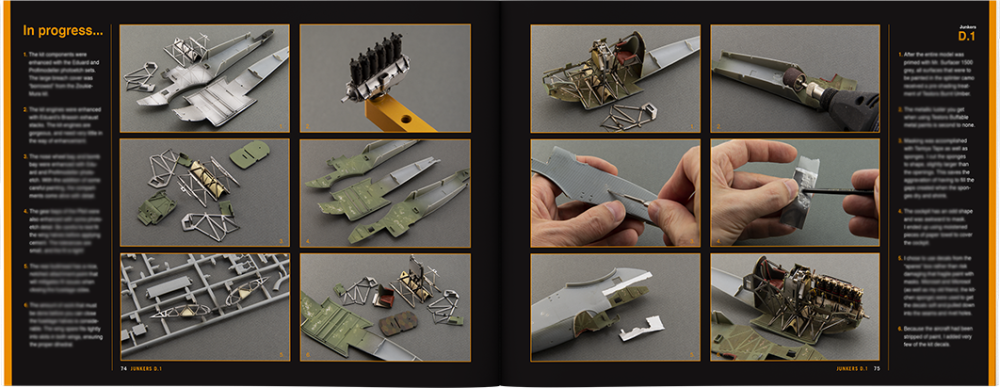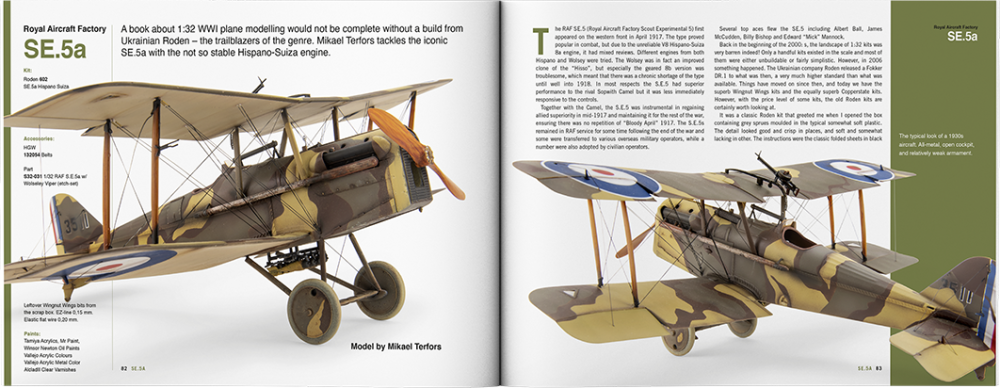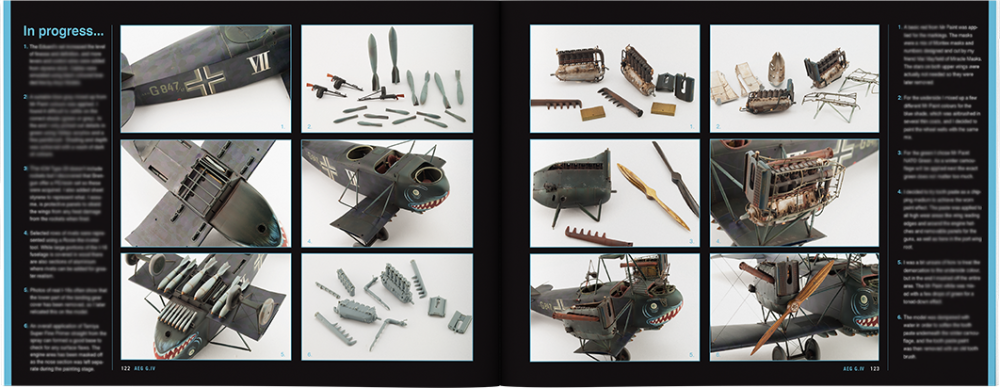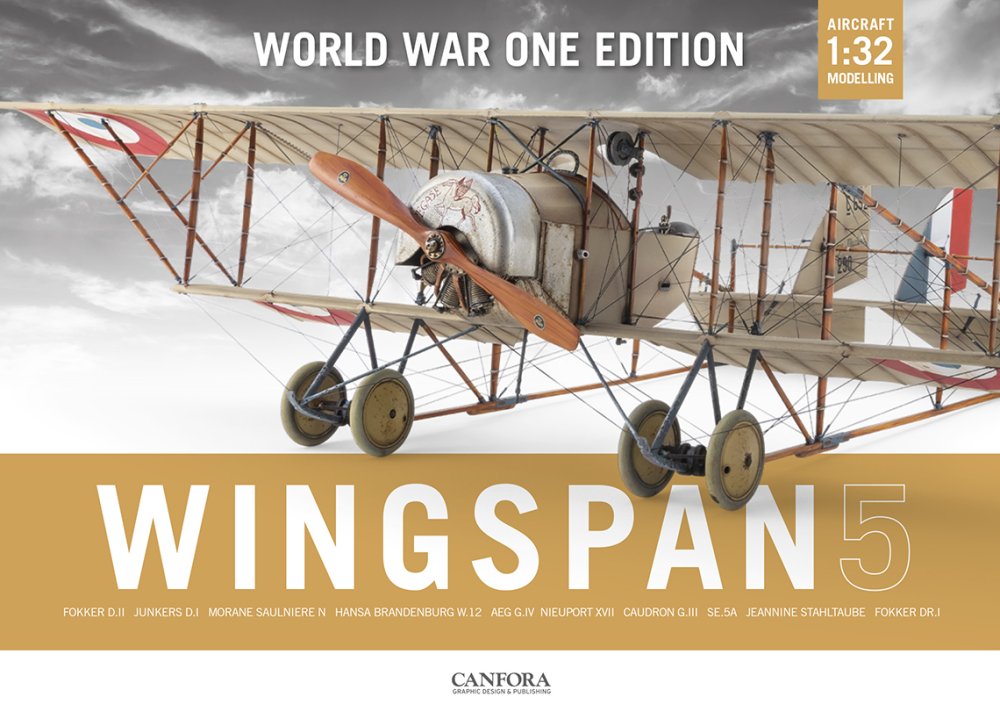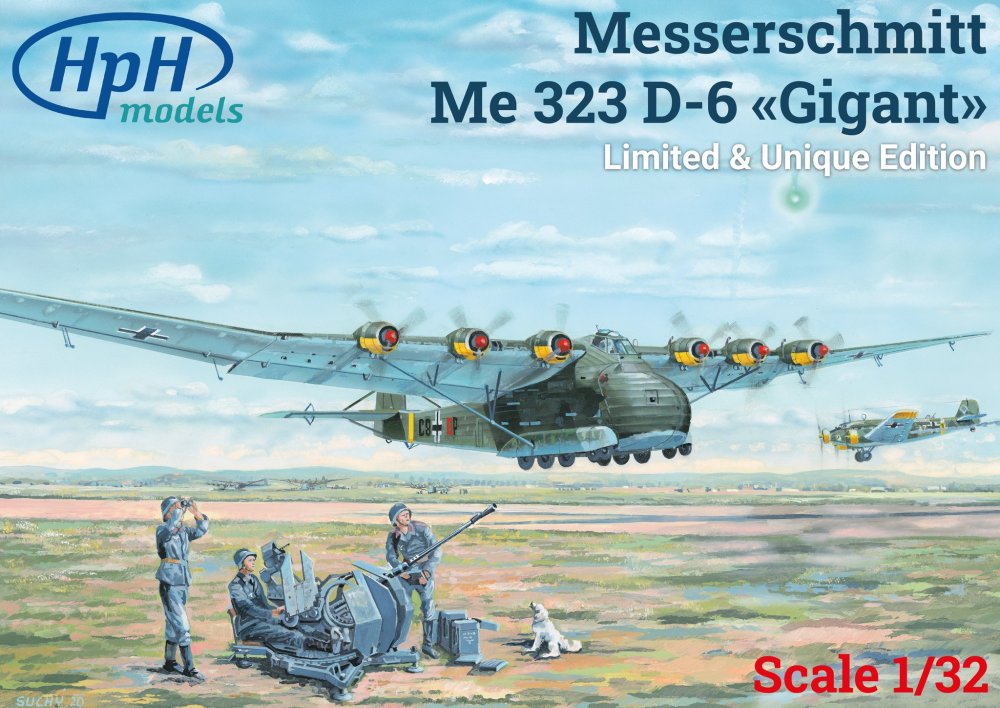The Great LSM Twins Group Build ends July 3, 2024
×
-
Posts
2,130 -
Joined
-
Last visited
Content Type
Profiles
Forums
Events
Gallery
Everything posted by Fran
-
hi Mark!! Please can we see some pics of the contents?
-
Inbox Review, mate??
-
wow!!!!
-
I got an email from Petr from ASK just informing tat they dont use laser cut machine but, and I qoute: " We dont use laser cut, we have in use very very high qualuty cutter. The service, the different cutting speed we use and the daily changing knifes made the small - but on the end the big difference to the other producers" Thanks for the intel! Fran
-
I got an email from Petr from ASK just informing tat they dont use laser cut machine but, and I qoute: " We dont use laser cut, we have in use very very high qualuty cutter. The service, the different cutting speed we use and the daily changing knifes made the small - but on the end the big difference to the other producers" Thanks for the intel! Fran
-
Yes. Its a fantastic mask and I already using it for the B-25. Perfect fit!!
-
Thanks!! Somehow the link is for this page... I put it wrong for sure!
-
ART SCALE KIT Masks 1:32 A-20G (HK MODELS kit) Cat. N. 200-32062 Price tag: €13,70 plus shipping Available at ASK store, here One of the aftermarket that I usually get to my builds is canopy mask. For one main reason: time! With a much less amount of time you get a very good result that you also can get in the tradicional way, but with lots of time “wasted”… So, I had the luck to get some samples from ASK Productions canopy mask. It was a product that I was keen to see and to try. So, last week, I got this mask for my upcoming build for MAI/MMI, the future 1:32 Hong Kong Models A-20G, that I was lucky enought to get a test sample. It’s a plastic bag like all other mask set from other brands. The mask itself is made from a tape very similar to kabuki tape, only a bit darker. The inside instructions are very clear and every mask it has it`s on number. Great touch to make your live even easier. This particular sample is the double-face mask so you can mask inside to make more realistic your build. It`s praticaly impossible to paint inside without this. Let`s see what I can get with this set mask. So I decided to work immediately with it, so I start to use the inside tape… The mask is easy remove from the sheet with a fine tweezer. The glue on the tape is very good and it is resistant so you can glue and unglue form the clear part to get the perfect alignment without worries of losing the tape glue. The numbers are simply a perfect indication! A great add to find that small mask in the full yellow sheet. I finish the interior cockpit canopy mask in less than 10 minutes work!!! CONCLUSION: I love this lasercut mask set. I really do because is a great product (perfect tape glue, perfect tape), with super clear instructions with the numbers of the mask that makes the job super easy and super fast. I have tried several other mask products (kabuki and vinyl mask) and this product, with the quality tape and the mask number indication makes to the top of my favorite mask canopy set. Very Highly recommended Fran Our thanks to ASK – Art Scale Kit for the review samples. You can get this set and all mask set at Art Scale Kit webshop
-
ART SCALE KIT Masks 1:48 B-25 J Glazed Nose (HK MODELs kit) Cat. N. 200-48109 Price tag: €11,60 plus shipping Available at ASK store, here One of the aftermarket that I usually get to my builds is canopy mask. For one main reason: time! With a much less amount of time you get a very good result that you also can get in the tradicional way, but with lots of time “wasted”… So, I had the luck to get some samples from ASK Productions canopy mask. It was a product that I was keen to see and to try. So, last week, I got this mask for my upcoming build for MAI/MMI, the 1:48 Hong Kong B-25 J. It’s a plastic bag like all other mask set from other brands. The mask itself is made from a tape very similar to kabuki tape, only a bit darker. The instructions are very clear and every mask it has it`s on number. Great touch to make your live even easier. This particular sample is the double-face mask so you can mask inside to make more realistic your build. It`s praticaly impossible to paint inside without this. Let`s see what I can get with this set mask. So I decided to work immediately with it, so I start to use the inside tape… The mask is easy remove from the sheet with a fine tweezer. The glue on the tape is very good and it is resistant so you can glue and unglue form the clear part to get the perfect alignment without worries of losing the tape glue. The numbers are simply perfect! A great add to find that small mask in the full yellow sheet. I finish the entire interior canopy mask in less than 30 minutes work!!! CONCLUSION: I love this lasercut mask set. I really do because is a great product (perfect tape glue, perfect tape), with super clear instructions with the numbers of the mask that makes the job super easy and super fast. I have tried several other mask products (kabuki and vinyl mask) and this product, with the quality tape and the mask numberindication makes to the top of my favorite mask canopy set. Very Highly recommended Fran Our thanks to ASK – Art Scale Kit for the review samples. You can get this set and all mask set at Art Scale Kit webshop
-

LSM Modelling News 2023 merged Fran and Artful69’s threads
Fran replied to Fran's topic in Modelling Discussion
In fact, a Fulmar and a Batlle in 1:35?? Must be a typo error no? -
Sorry to hear about your situation, Harv. Even friendly, still is a big chance in life! Well, with the move you will find lots of stuff that you dont even remember, I think!
-
Nice paint work!!
-

LSM Modelling News 2023 merged Fran and Artful69’s threads
Fran replied to Fran's topic in Modelling Discussion
yes... there`s several almost most wanted models for me, in 1:35 and in 1:48!! Love to get me hands in some like the He-111 H8 Paravane, Ki-21 Sally, the Hs-123 and the Sikorsky CH-54A Tarhe... The B_26 too but I would prefer in 1:32! -

LSM Modelling News 2023 merged Fran and Artful69’s threads
Fran replied to Fran's topic in Modelling Discussion
Upcoming news from DK Decals The P-39 is in 1:32, and the A-20 and B-25 in 1:48. They also have for the end of the moth new decals sheets for the 1:24 for the Spifire and Hurricane. -

1:32nd scale Fokker E.IV
Fran replied to sandbagger's topic in WW1 1/48 and larger Ready for Inspection
LOOOOOVE IT!! Great work!!! -
Breda 65A-80 ‘Aviazione Legionaria’ 1:48 Special Hobby Catalogue number SH48226 Price range: €35,91 “Intended as an aeroplano di combattimento, capable of fulfilling the roles of interceptor fighter, light bomber, or reconnaissance/attack aircraft as required, the prototype Breda Ba.65 (MM 325) made its initial flight in September 1935, piloted by Ambrogio Colombo. It was a cantilever low-wing monoplane with main landing gear units retracting rearwards into underwing fairings. Basic structure of the fuselage and wing was of chrome-molybdenum steel alloy tubing, covered overall with duralumin sheet, except for the trailing edges of the wing, which were fabric-covered. The wing incorporated trailing-edge flaps and Handley Page leading-edge slats. A single fin and rudder tail assembly was strut- and wire-braced, and was of steel construction with light alloy skins. An initial production order for 81 Ba.65s was placed in 1936, all powered by the French Gnome-Rhône K-14 engine of 700 hp (522 kW) as had been installed in the prototype. A batch of 13 aircraft from this production series equipped the 65a Squadriglia of the Aviazione Legionaria, the Italian air contingent sent to support the Fascist cause in the Spanish Civil War .The unit took part in operations at Santander in August 1937, then at Teruel, and in the battles for the River Ebro. Like the prototype these were single-seat aircraft, with the pilot's cockpit fully enclosed by a glazed canopy which tapered to the rear. Experience in Spain indicated that the Ba.65 was suited only to the attack role, and the type served thenceforth with most of the eight squadriglie attached to the two Regia Aeronautica assault stormi (wings), the 5° and 50°. A second series of 137 aircraft was built by Breda (80) and Caproni-Vizzola (57), before production ended in July 1939. They differed from the first production batch by having Fiat A.80 engines. Six Fiat powered Ba.65s and four more of the Gnome-Rhône powered version were sent to the Aviazione Legionaria in Spain in 1938. Following Italy's entry into World War II in June 1940, Ba.65s were involved in the fighting in North Africa against the British. They had a low serviceability rate in desert conditions and put up an unimpressive performance. The last serviceable aircraft was lost during the British offensive in Cyrenaica in February 1941. A large number of the Ba.65s serving with Italian units were of two-seat configuration, with an observer/gunner in an open cockpit above the trailing edge of the wing. A smaller number of the type had a Breda L type turret, but in either case the observer/gunner operated a single 7.7 mm (0.303 in) machine-gun. While offensive armament could theoretically comprise up to 2,205 lbs (1000 kg) of bombs, the load usually carried was up to 661 lbs (300 kg) in the fuselage bomb bay or, alternatively, up to 441 lbs (200 kg) on underwing racks. Exports included 25 Fiat powered Ba.65 two-seaters to Iraq in 1938, two of them dual-control trainers and the remainder with Breda L turrets; 20 Ba.65s with Piaggio P.XI C.40 engines to Chile later in the same year. 17 of them single-seaters and three dual-control trainers; and 10 Fiat powered two-seaters with Breda L turrets to Portugal in November 1939. A single Fiat powered production aircraft was tested with an American Pratt & Whitney R-1830 engine in June 1937 in anticipation of an order from the Chinese Nationalist government, but this failed to materialise. The Iraqi Ba.65s saw limited action against the British during the 1941 insurrection in that country. Type: Single Seat Ground Attack Design: Breda Design Team Manufacturer: Societa Italiana Ernesto Breda and also built by Caproni-Vizzola (57) Powerplant: (Ba.65 A.80) One 1,000 hp (746 kW) Fiat A.80 RC.41 18-cylinder radial piston engine. (Ba.65 K-14) One 700 hp (522 kW) Rhone-Gnôme K-14 radial engine. Performance: Maximum speed 267 mph (430 km/h); maximum speed (two-seat) 255 mph (410 km/h); service ceiling 20,670 ft (6300 m). Range: 342 miles (550 km) on internal fuel. Weight: Empty equipped 5,291 lbs (2400 kg) with a maximum take-off weight of 6,504 lbs (2950 kg). Dimensions: Span 39 ft 8 1/2 in (12.10 m); length 30 ft 6 1/4 in (9.30 m); height 10 ft 6 in (3.20 m); wing area 252.96 sq ft (23.5 sq m). Armament: Two 12.7 mm (0.50 in) and two 7.7 mm (0.303 in) Breda-SAFAT fixed forward firing machine-guns in the wings, plus up to 661 lbs (300 kg) of bombs in fuselage bomb-bay and up to 441 lbs (200 kg) of bombs on underwing racks. Variants: Ba.65 (MM 325 prototype), Ba.65 (single seat), Ba.65 (two seat), Ba.65 (trainer). No official version designations were used since all aircraft were technically identical, and aircraft were identified simply by the engine used. Avionics: None. History: First flight September 1935; (first deliveries) 1937. Operators: Italy (Regia Aeronautica), Iraq, Portugal, Chile. Historical text from http://www.pilotfriend.com/photo_albums/timeline/ww2/Breda Ba.65 A.80.htm It`s the first I look to this model kit, even knowing that it has been around since 2010 and this particularly one is a Special Hobby rebox with new decals. Being a limited run kit, there are none of the little luxuries such as locating pins and tabs, so take time when aligning and gluing the plastic parts. But, as you can see the dry fitting is quite good, even being a limited run model. There are a few raised ejector pin circles that look like they will interfere with wing parts joining (especially on the inside of tail planes), so you'll need to clean these up prior to assembly. But that`s a quite easy job in fact. The surface textures on the wings and fuselage are quite good with fine recessed panel lines and very subtle stretched fabric effect on control surfaces, are all well done. In total you will get 3 sprues in grey plastic and one sprue of clear plastic. A ziplock bag with resin parts and a PE sheet. The plastic parts, while being a limited run plastic, I only found some flash plastic on small parts and the cockpit tubular structure. The Sprue A you have the fuselage, tail wings, cowling, wheels etc. The sprue B, wings and landing gear And sprue C all small pieces including cockpit tubular structure, instrument panels, wheels bay, etc Checking up all the parts and their detail. Raised structural detail is molded onto the inside of the fuselage but its given also the internal cockpit tubular structure (like a small cage) with plastic parts. The fuselage halves have detail molded into their interiors, with extra details add by several panel sections on the port side with PE levers, plus a side console on the starboard along with other dials, equipment and an oxygen cylinder. The cockpit is quite well detail out of the box with PE seatbelts, PE chains, PE foot rest. It’s a quite busy cockpit with the bomb racks tubular structure right behind, made by PE where the resin bombs will be in. I really like the cockpit and bombay detail. Even so, I think that there`s still space for some aftermarket details like the instrument panel even with those lots of PE levers on it. Leaving the plastic, the resin is top notch, which is nothing odd considering that Special Hobby ownes CMK. The engine is in full resin with 18 cylinders cover with a resin cowling and with a exhaust ring collector and two exhausts, one in each side of the fuselage. The PE sheet, as said, is for several cockpit details but also to exhaust support. The clear plastic sprue does have some tricky design parts for the cockpit. I must say that I will get the Special Hoby mask as it is a timesaver and could be a work saver. On the box you get two markings from the same period: Spanish Civil war. The decals do have great color pigmentation and look quite thin. However I can`t say who make them. I - 16-35 65a Squadriglia Assalto, Aviazione Legionaria, Puig Moreno, Spain, Winter, 1938 16-35 65a Squadriglia Assalto, Aviazione Legionaria, Puig Moreno, Spain, Winter, 1938 Both markings are the same concerning to badge and insignia. The Only thing that chance is the aircraft serial number. The instructions are a small booklet with 11 pages, quite good and clear drawings with quite precise part indication. And also some Special hobby AM ad suggestion for this kit and to other Italian aircraft model kits. The color are given in Mr Hobby Gunze color. I would prefer the color reference in Tamiya or AK Real Color as they are must easy to find. Conclusion It´s great to see this reedition of this limited run kit. So it`s not a beginner but with patience, work and skill it can be achieved a very nice looking model. It`s quite an unusual subject in 1:48, but a very welcome one when it was release and still is now that has being release.! VERY Highly recommended. My trully Thanks to Special Hobby for the review sample.
-
Ernie, my friend, Sorry for your loss. Blue Skies Flash.
-

LSM Modelling News 2023 merged Fran and Artful69’s threads
Fran replied to Fran's topic in Modelling Discussion
Now this weeekend Das Werk showed their 2023 release plan. Love the Trippel And I wil get the Larc-V Early !! -
Fiat G.50B Bicomando 1:32 Special Hobby Catalogue number SH32083 Price range: €45,40 “During the thirties, Fiat Aviazione was one of the most advanced aircraft manufacturers in Europe. With the advent of new technology at the time, it was obvious that the next stage in the development of the aircraft industry, especially in military aviation, would be centered around all-metal monoplanes. Fiat’s Chief Designer, Ing. C. Rosatelli, had been designing mixed-construction biplanes and even an all-metal bomber. As the demand for a modern, all-metal fighter plane was high, Fiat officials made a decision to hire a young aircraft engineer named Giuseppe Gabrielli, who would later design the Freccia, the first operational Italian all-metal fighter. The history of the Fiat G.50 began in 1931, when Fiat formed a new Aircraft Technical Bureau – Department 2 (Ufficio Tecnico Aviazione – Divisione II). The main purpose of this bureau was designing and building brand new types of modern all-metal planes. The same year, a young Italian engineer, Giuseppe Gabrielli, was hired by Fiat Chairman Senator Angelli to work for the Technical Bureau. Giuseppe Gabrielli had gained some experience in aircraft design while working for Piaggio. When he moved to Fiat, he immediately began working on several non-military aircraft projects. All of his projects were marked by the capital letter ‘G’, his initial. First was the G.2, an all-metal, three-engined plane, then the G.8 biplane trainer, and later the twin-engine passenger plane G.18. During the thirties, the Italian Ministry of Aviation (Ministero dell Aeronautica) was interested in adopting a new, all-metal monoplane fighter and ground attack aircraft for the Italian Air Force. Some specifications for their request were: to use one radial engine, armed with at least two 0.5 in (12.7 mm) heavy machine guns with at least 300 rounds of ammunition and one 0.7 in (20 mm) gun or 1.45 in (37 mm) gun, and provisions for bombs on the ground attacker. A request was sent out to all domestic aircraft manufacturers. There were several proposals in response, but only the G.50 and the Macchi C.200 would be chosen for production. The others were either rejected (Ro.51 and A.U.T. 18) or built in limited numbers, like the Caproni F.5. In order to solve the problem of the lack of an adequate fighter design, Fiat officials even considered the acquisition of a license to produce the American Seversky SEV-3, but nothing came of this. In April of 1935, Giuseppe Gabrielli began working on a new low-wing, all-metal plane named G.50. According to his first plans and drawings, it was to be armed with two machine guns, powered by a 550 hp radial engine (with a diameter of 39 in/1 m), weigh around 3,395 lbs (1,540 kg), and equipped with a retractable landing gear. At the same time, Fiat was testing a new FIAT A 74 RC 38 14-cylinder radial piston engine, so it was logical that Giuseppe Gabrielli decided to use it for his work. The A 74, in principle, was a direct copy of the American Pratt & Whitney R-1830 Twin Wasp which powered a large number of US planes, including the Douglas C-47, Consolidated PBY Catalina, Douglas TBD Devastator and Grumman F4F Wildcat. The expected speed of the G.50 with this new engine was around 285 mph (460 km/h) at 11,500 ft (3,500 m). (…) The G.50 Freccia, Italian for Arrow, was a single-seat, low-wing, all-metal fighter plane. The main fuselage was made from four angular shaped longerons with 17 metal frames. The wing construction consisted of a center section which was made of a steel tube connected to the lower fuselage and two metal spars connected with ribs. The four flaps were hydraulically actuated and at certain speeds they would automatically retract to their closed position. The fuselage, wing, and tail were covered with duralumin sheets. The only fabric-covered parts were the movable control surfaces in the wings and the tail. This G.50 belonged to the 20th Group, transferred from Belgium to North Africa. [ea51.org] The engine was placed in a tubular shaped mount made of chrome-molybdenum steel that was connected to the fuselage by four bolts. The engine and the cockpit were separated by a fireproof screen in order to protect the pilot from any possible fire outbreak, either due to engine malfunction or damage. The plane was powered by the 840 hp (626 kW) Fiat A 74 RC 38, 14 cylinder radial piston engine. With this engine, the G.50 could reach a maximum speed of 293 mph (470 km/h), with an effective range of 276 mi (445 km) and a service ceiling of 35,000 ft (10,700 m). An all-metal three-blade propeller produced by Fiat was used. One of major disadvantages of using a radial type of engine was the massive drag due to its large cross-section. In order for ground repair crews to have easy access to the engine and the fuselage interior, several access doors were added. The maximum fuel capacity was 83.5 gal (316 l.) There were two fuel tanks located in the wings 11.9 gal each (45 l) and two more in the fuselage, one larger with 26.4 gal (100 l) and a smaller one with 18 gal (68 l) with an additional auxiliary tank 13.75 gal (52 l) also located in the fuselage. The first G.50 series had an enclosed cockpit design but as this created many issues, it was later changed to an open cockpit. Despite its disadvantages, the enclosed cockpit had an excellent rear view. Many different open cockpit designs were tested before the final design was chosen. The later version with the open cockpit had two smalls door installed to help entering or exiting the plane. The seat was adjustable, so it could be adapted to the pilot’s needs. In front of the pilot, the dashboard was divided into three sections. On the upper section were the navigation instruments, reflector sight, fuel indicators and engine instruments. The middle section had the ammunition counter, warning lights, the position of the landing gear, compass and oxygen control panel. The lower section had the engine starter, cowling controls and compressed-air system indicator. The radio in the pilot’s cabin was the ARC 1, but the quality of the batteries was poor. A fire extinguisher system was also provided. There was also the possibility of installing one OMI FM62 camera gun. The G.50 was equipped, like most modern aircraft of the time, with inward retracting landing gear, but the rear tail wheel was fixed. In the G.50 bis version, the rear tail wheel was changed to a retractable type. The landing gear could, if necessary, be manually operated. At first, it was of a Messier type, but it was later replaced with a Magnaghi design. The retracting landing gear was hydraulically operated, and pneumatically during lowering. In case both systems did not work for any reason, it could be manually operated. For easier and more pleasant landing, hydraulic shock absorbers were provided for both telescoping legs. The main armament consisted of two forward-firing 0.5 in (12.7mm) Breda-SAFAT heavy machine guns, with some 150 rounds of ammunition for each machine gun. The guns were placed behind the engine top and both were synchronised in order not to damage the propeller. It is interesting to note that this gun used oil lubricant for faster firing and thus a lubricant tank was added on top of the engine. Some G.50 planes were armed with bomb racks and used in North Africa. (…) Trainer G.50 B The Fiat G.50 B version with the longer cockpit design for the instructor and the student. As the G.50 was entering production and the first operational units were formed, a trainer was needed for new pilots. As most army pilots were accustomed to flying older biplanes, retraining them for flying the monoplanes was required. For this purpose, in late 1936 the Italian Air Ministry placed an order for Fiat to developed a two seat dual control plane based on the G.50. After the mock-up was built and inspected in March 1938, it was deemed sufficient for production. By April, an order for the first prototype was placed. But due to the constant changes to the design, the production of the first prototype was frequently delayed. It was not until June 1939 when the final design with an enclosed cockpit was chosen. The plane was named G.50 B. The capital ‘B’ stands for ‘bipost,’ the Italian word for two-seater. This version was recognizable by its long glazed canopy with the rear cockpit being open from the top. The first prototype, marked 3615, would be ready in late April 1940 when it was tested by Enzio Guerra. After only a few test flights, it was deemed adequate and was put into production. The first ten were built in 1940, with the last one built in 1943. In total, some 108 (or 100, depending on the source) G.50 B trainers were built during the war. Production by years was: 10 in 1940, 82 in 1941, 11 in 1942 and 5 in 1943. The first series of G.50 planes produced had an enclosed cockpit design, but this was later replaced with a semi-open design. [warbirdphotographs] The G.50 B was, in essence, a modified single-seat version with a new cockpit and dual controls. The front part of the cockpit was fully enclosed in contrast with the rear which was open. The main armament was removed on the G.50 B. This version was very successful, as it was easy to build and offered almost the same flying performance as the single-seat version. These were used mostly by the Regia Aeronautica Fighter Schools. Smaller numbers were operated as liaison planes or even in some front based fighter units. After the Italian capitulation, small numbers, possible 20 or more, were used by the National Republican Air Force. At least one was given to the Croatian puppet state in the Balkans. The last G.50 B were used by the Flying School in Lecce for a few years after the war, up to 1948. Historical text and pics from https://plane-encyclopedia.com/ww2/fiat-g-50-freccia/ Now that`s look to the kit. This model is a different version of the one-seater Fiat G.50, also from Special Hobby, with new parts. So I check the 1:32 Special Hobby one-seater version instructions and compare with this version, and we immediately can see that the sprue A are different, with a new fuselage and new cockpit flor and there is an extra sprue, the sprue E. Sprue A Sprue E And as obvious, the clear parts are also different. As for the resin and PE parts, all is equal but you get two PE sheets (and not just one, as you have two cockpits to make. So the box is a standard top-opening box in the Special Hobby style, and as I said 5 sprues in plastic grey, a clear sprue, two PE sheets and quite a few resin parts. Being a limited run kit, there are none of the little luxuries such as locating pins and tabs, so take time when aligning and gluing the plastic parts. But, as you can see the dryfitting is quite good, even being a limited run model. There are a few raised ejector pin circles that look like they will interfere with wing parts joining (especially on the inside of tail planes), so you'll need to clean these up prior to assembly. But that`s a quite easy job in fact. The surface textures on the wings and fuselage are quite good with fine recessed panel lines and very subtle stretched fabric effect on control surfaces, are all well done. Raised structural detail is molded onto the inside of the fuselage. The fuselage halves have detail molded into their interiors, with extra details add by several panel sections on the port side with PE levers, and other details. The cockpit is made up from the floor section, rear bulkhead, two seats, two instrument panel, control columns, and several sidewall instruments made of resin. Moulding of the plastic and mainly the very good detail of the resin parts will pop out with careful painting and weathering. The instrument panel is a single plastic part with recessed circles and raised switches and two decal sheet with instrument dial. Passing to the resin parts, they are mainly for the engine and engine cowlings (and several small bits for the cockpit) The resin is top noch quality as Special Hobby isthe home of CMK. The resin are in gray color has no distortion or bubbles and very good casting and detail in every single one. Very impressive casting Most of it if for the engine that has a central core, and each cylinder must be add. There are sixteen cylinders in all so patient will be need. Here, as a typical limited run kit, you will need to make push-rods with 0.3mm diameter wire and 8mm long The main wheels. Well each is built from two halves. As always, I will get the resin wheels from CMK. The PE sheets. As it is a bi-seater, you get two PE sheets identical one with seatbelts for both seats, and some small details for the cockpit like handles and levers. The clear parts are very well molded with good frames delimitation and also good clearance and transparency. As for the markings, it offer four disparate markings options on the decal sheet: Black 136, MM6425, Advanced Flying School, Regia Aeronautica, Italy, 1941 No.3510, MM6477, 1 Sqn., 1 Group, Air Base, No.1, Croatian Air Force, Zagreb-Borongaj, Croatia, June 1942 MM unknown, Luftwaffe, Italian Social Republic, Mid 1943-early 44 Black 1, MM6843, 3ᵃ Squadriglia, 2° Gruppo Scuola Volo, Aeronautica Militaire, Brindisi, Italy, 1946 The decals look quite good with good definition and color pigmentation. I don’t know who printed them as its no reference at all of the manufacture so I don’t know how they will work out. The instruction are a booklet with 13 pages (and two of Special Hobby products), in satin paper, with good drawings and location parts and even with aftermarket suggestion (of their brand) along the way (nice Special Hobby) Conclusion It´s a limited run kit so its not a beginner but with patience, work and skill it can be achieved a very nice looking model. In fact, having build the early Special Hobby back in the 90, this one looks like almost a “Tamigawa” comparing to them. It`s quite an unusual subjecti in 1:32, but a very welcome one after the single seater and Special Hobby has done a very good job with this one! VERY Highly recommended. My trully Thanks to Special Hobby for the review sample.
-

LSM Modelling News 2023 merged Fran and Artful69’s threads
Fran replied to Fran's topic in Modelling Discussion
Canfora Publishing just announced the new Wingpsan 5. All dedicated to WWI!! Take thechance to get it a 21,60€! https://canfora.se/wingspan-volume-5/ and to complete your personal livrary, just get also the Aircraft Weapons of World War One!! Perfect - https://canfora.se/.../wingspan-5-aircraft-weapons-of-wwi/ Perfect to all WWI modelers! -

LSM Modelling News 2023 merged Fran and Artful69’s threads
Fran replied to Fran's topic in Modelling Discussion
That what i thought... just wanted a confirmation -

LSM Modelling News 2023 merged Fran and Artful69’s threads
Fran replied to Fran's topic in Modelling Discussion
Well, one Fw-190 A-6 in 1:35 scale!!! And the crazy 1:32 HpH Me-323 D.6 - about this one, its quite odd that for some (probably world region) is around 1575€ and for other (me) it appear €1906.... -

LSM Modelling News 2023 merged Fran and Artful69’s threads
Fran replied to Fran's topic in Modelling Discussion
Not yet!





